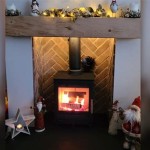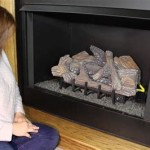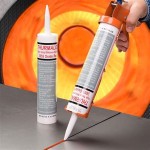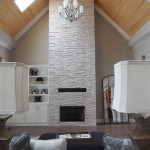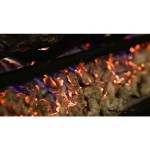Cabin Fireplace Mantels: A Guide to Rustic Elegance
The fireplace serves as a focal point in many cabins, offering warmth, ambiance, and a gathering place for relaxation. A well-chosen fireplace mantel enhances the visual appeal of the fireplace and contributes significantly to the overall aesthetic of the cabin. Cabin fireplace mantels are often characterized by their rustic charm, reflecting the natural surroundings and creating a cozy, inviting atmosphere. Selecting the right mantel requires careful consideration of factors such as material, size, style, and integration with the existing décor.
This article will explore the various aspects of cabin fireplace mantels, providing information to assist in making informed decisions. It will delve into common materials used, design considerations, installation tips, and maintenance suggestions to ensure the mantel not only looks beautiful but also functions effectively and safely within the cabin environment.
Material Selection for Cabin Fireplace Mantels
The material used in a cabin fireplace mantel greatly influences its appearance, durability, and cost. Several materials are commonly employed, each possessing its own unique characteristics and advantages.
Wood: Wood is perhaps the most traditional and widely used material for cabin fireplace mantels. It offers a warm, natural look that complements the rustic aesthetic often associated with cabins. Various types of wood can be used, including reclaimed wood, timbers, and manufactured wood products. Reclaimed wood, sourced from old barns, factories, or other structures, provides a unique, weathered appearance with inherent character. Timbers, typically large, solid beams, offer a substantial and rustic feel. Manufactured wood products, such as MDF or plywood, can be more affordable and offer greater design flexibility but may lack the authentic appeal of solid wood.
Considerations when selecting wood for a mantel include the type of wood, its moisture content, and its susceptibility to pests. Hardwoods, such as oak and maple, are generally more durable than softwoods, such as pine and cedar. Proper drying and sealing of the wood are essential to prevent warping, cracking, and insect infestation. The finish applied to the wood also affects its appearance and durability. Options range from natural stains that highlight the wood's grain to painted finishes that provide a uniform color.
Stone: Stone mantels offer a rugged, natural look that blends seamlessly with the outdoor environment. Stone can range from river rock and fieldstone to more refined options like granite and slate. The weight of stone mantels requires careful consideration during installation, as they often necessitate additional structural support.
The natural variations in color and texture within stone add to its visual appeal. Stone mantels are generally durable and require minimal maintenance. However, they can be more expensive than wood mantels and may require professional installation due to their weight and complexity.
Metal: Metal mantels, often crafted from wrought iron or steel, can provide a more contemporary or industrial look in a cabin setting. They can be custom-designed to incorporate intricate details or maintain a simple, minimalist aesthetic. Metal mantels are typically durable and fire-resistant, making them a practical choice for fireplace surrounds.
Metal mantels can be powder-coated or painted to achieve a desired color and finish. They may require occasional cleaning to remove dust and soot. While less common than wood or stone, metal mantels can add a distinctive touch to a cabin fireplace.
Concrete: Concrete mantels are becoming increasingly popular, offering a modern and versatile alternative to traditional materials. Concrete can be cast in a variety of shapes and sizes, allowing for customized designs. It can also be stained or textured to achieve a desired look. Concrete mantels are durable and fire-resistant, making them a safe and reliable choice.
The weight of concrete mantels requires careful consideration during installation. They may also require sealing to prevent staining. Concrete mantels can be a stylish and contemporary addition to a cabin fireplace.
Design Considerations for Cabin Fireplace Mantels
The design of a cabin fireplace mantel should complement the overall style of the cabin and the architecture of the fireplace itself. Factors to consider include the size and proportions of the mantel, its placement in relation to the fireplace opening, and the integration of decorative elements.
Size and Proportions: The size of the mantel should be proportional to the size of the fireplace and the surrounding wall. A mantel that is too large can overwhelm the space, while a mantel that is too small may appear insignificant. The height of the mantel should also be considered, ensuring it is positioned at a comfortable viewing level.
Style and Aesthetic: The style of the mantel should align with the overall aesthetic of the cabin. A rustic cabin may benefit from a mantel made of reclaimed wood or rough-hewn timbers, while a more contemporary cabin may suit a sleek metal or concrete mantel. Consider the textures and colors of the surrounding walls and furnishings when selecting the style of the mantel.
Decorative Elements: The mantel can be adorned with decorative elements to enhance its visual appeal. Common decorations include picture frames, candles, vases, and seasonal decorations. Avoid placing flammable items too close to the fireplace opening. Consider incorporating natural elements, such as pine cones, branches, or stones, to reinforce the cabin's rustic theme.
Mantel Shelf Depth: The depth of the mantel shelf provides space for displaying decorative items. A deeper shelf allows for larger items, while a shallower shelf may be more suitable for smaller accents. Consider the intended use of the mantel shelf when determining its depth.
Fireplace Surround Integration: The mantel should integrate seamlessly with the fireplace surround. The surround is the material that surrounds the fireplace opening and can be made of brick, stone, tile, or other materials. The mantel should complement the color and texture of the surround, creating a cohesive and visually appealing design.
Installation and Safety Considerations for Cabin Fireplace Mantels
Proper installation is crucial for ensuring the safety and functionality of a cabin fireplace mantel. Incorrect installation can lead to structural instability or fire hazards. It is important to follow manufacturer's instructions and local building codes when installing a mantel.
Clearance to Combustible Materials: Maintaining adequate clearance between the mantel and the fireplace opening is essential for preventing fire hazards. Building codes typically specify minimum clearance distances for combustible materials, such as wood. Consult local codes and the fireplace manufacturer's instructions for specific requirements. Typically, the higher the mantel is above the firebox opening the less is the heat risk. A mantel that is twelve inches or more above the opening can be closer than one located six inches above.
Structural Support: The weight of the mantel must be adequately supported. For heavy mantels, such as those made of stone or concrete, additional structural support may be required. This may involve reinforcing the wall studs or using specialized mounting brackets.
Professional Installation: If unsure about any aspect of the installation process, it is best to hire a qualified professional. A professional installer has the experience and knowledge to ensure the mantel is installed safely and correctly.
Fastening Methods: Proper fastening methods are crucial for securing the mantel to the wall. Use appropriate fasteners, such as screws or bolts, that are designed for the type of wall material. Ensure the fasteners are long enough to penetrate the wall studs or structural support.
Mantel Height: The height of the mantel should be at a comfortable viewing level. A typical mantel height is between 48 and 54 inches from the floor. However, the optimal height may vary depending on the size of the fireplace and the height of the occupants.
Heat Shielding: Installing a heat shield can protect the mantel from excessive heat exposure. Heat shields are typically made of metal and are positioned between the mantel and the fireplace opening. They reflect heat away from the mantel, preventing it from overheating.
Regular Inspections: Regularly inspect the mantel for signs of damage, such as cracks, warping, or loose fasteners. Address any issues promptly to prevent further damage or safety hazards.
Maintenance: The maintenance requirements for a cabin fireplace mantel depend on the material used. Wood mantels may require occasional cleaning and sealing to protect them from moisture and pests. Stone mantels can be cleaned with a mild soap and water solution. Metal mantels may require occasional dusting. Concrete mantels may need to be resealed periodically to prevent staining. Consistent care will ensure the longevity and beauty of the mantel, making it a lasting feature within the cabin.
In summary, selecting and installing a cabin fireplace mantel involves careful consideration of material, design, and safety factors. Choosing the right mantel can enhance the aesthetic appeal of the cabin and create a warm and inviting atmosphere. By following the guidelines outlined in this article, the user can make informed decisions and ensure the mantel functions effectively and safely for years to come.

Cabin Fireplace Mantels Mantel Every Log Needs A Brick Makeover Rustic Living Room Design

Pin On Farmhouse

Half Log Mantels Accessories Rustic Fireplace

Love Hand Carved Fireplace Rustic Fireplaces Cabin

Mantels

S Log Home Fireplaces Fireplace Mantel Cabin Brick Makeover

Fireplace Mantels An In Depth Guide With S

Hand Crafted 1830s Rustic Log Cabin Fireplace Mantel By Antique Woodworks Custommade Com

10 Fireplace Mantels Los Angeles Homeowners Love Armand S Discount Inc

Re Made In Montana Rustic Stone Fireplace Cabin

